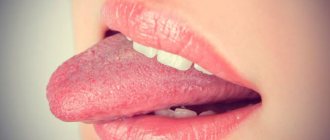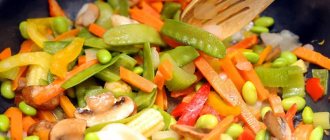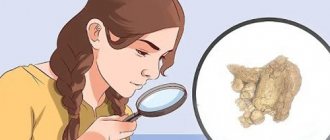Types of steatorrhea
With steatorrhea, sudden weight loss is observed
The disease was classified into:
- Alimentary (food). At the same time, patients consume excessive amounts of fat, which even a healthy body cannot digest.
- Intestinal. The affected mucosa lining the small intestines does not absorb fats.
- Pancreatic. With a poorly functioning pancreas, lipase, an enzyme that breaks down fat, is synthesized in deficiency.
In addition, steatorrhea is divided into 3 more types:
- First type: feces include neutral fat.
- The second type: fatty acids and soaps are found in the stool.
- Third type: a combination of 1 and 2 types.
Causes
- congenital and acquired diseases of the pancreas: chronic pancreatitis, tumors and cysts, cystic fibrosis;
- diseases of the liver and biliary tract: cholelithiasis, chronic cholecystitis, gallbladder dysfunction, chronic hepatitis, cirrhosis of the liver, tumors of the liver and bile ducts;
- intestinal diseases: chronic enteritis, colitis, tumors;
- history of surgical treatment of the gastrointestinal tract: condition after cholecystectomy (removal of the gallbladder), resection of the intestine or stomach (removal of part of the organ);
- alcohol abuse – leads to the development of alcoholic hepatitis, pancreatitis, and then steatorrhea;
- previous infectious intestinal diseases: dysentery, salmonellosis;
- helminthic infestations, giardiasis;
- addiction to fatty foods;
- abuse of laxatives and weight loss drugs;
- heredity - a genetically determined defect in pancreatic lipase, a predisposition to autoimmune diseases.
Causes of steatorrhea
The disease usually occurs due to impaired digestion or absorption of fats. Accelerated evacuation of feces is a rarer cause of the disease. It can occur due to laxative abuse.
The disease is provoked by pathologies inherent in the small intestine, pancreas, and liver. A frequent culprit of the disease is chronic pancreatitis, especially provoked by alcoholism. The presence of cardiospasm causes steatorrhea in exceptional cases. Stagnation of bile, which promotes the emulsification of fats and their absorption, leads to steatorrhea (light-colored stools).
1.What is steatopancreatitis
Steatopancreatitis is a disease caused by fat cells replacing pancreatic tissue. This pathology belongs to the gastroenterological profile, but is one of the few diseases associated largely with a person’s lifestyle. Unlike diseases caused by heredity, infections and other inevitable factors, pancreatic steatosis can be avoided if you give up bad habits, overeating, a sedentary lifestyle and a fat-containing diet.
The insidiousness of steatopancreatitis is that it can be asymptomatic for a long time, and ultimately lead to a sudden exacerbation - pancreatic dysfunction.
The group at greatest risk for steatopancreatitis are men in adulthood and old age, since by this time many of them had been using nicotine and alcohol for a long time, had errors in their diet, and overeated. The effect of pancreatogenic factors in women is lower, however, after 60 years, the risk of developing steatosis also increases.
A must read! Help with treatment and hospitalization!
Signs and symptoms
A sharp urge to go to the toilet is one of the signs of steatorrhea
The stool is usually loose, copious and quite frequent. However, steatorrhea may well be accompanied by constipation. Any form of oily bowel movement is characterized by the formation of a poorly washed off stain with a greasy sheen in the toilet bowl. The color of the stool can be normal, light or grayish.
Patients suffer from dizziness, bloating and rumbling in the intestines that occur in the upper abdomen, constant drying of the mucous membranes of the mouth and nose, lethargy, and decreased performance. They suffer from a dry cough, frequent frequent loose bowel movements, and pain that occurs at the ends of the long bones. They are worried about pain in the spine and joints.
People burdened with steatorrhea rapidly lose weight and become exhausted.
In patients, the subcutaneous fat tissue is underdeveloped, the skin is dry, flaky, and often affected by polymorphic erythema. They have dry and pale lips, cracks in the corners of the mouth. The oral cavity shows signs of stomatitis, the tongue is brightly colored, sometimes with atrophied papillae, the gums are loose and bleeding.
Diagnostics
Steatorrhea requires treatment!
Examining the stool reveals its obvious oiliness. In most cases, the consistency of stool is liquid and the color is light. Laboratory analysis reveals excess fats, soaps and fatty acids.
Steatorrhea is diagnosed if 7 g of fat is excreted in the feces per day.
The exact origin of the disease is determined using radioisotope research, indicating the cause of the disorder, which is associated with the breakdown or absorption of fats.
The fat loading method allows you to exclude pancreatic diseases, which means worsening of the digestion processes, or intestinal diseases that result in poor absorption.
Diagnosis of chronic pancreatitis
There is no need to rely on routine clinical laboratory tests for diagnosis. During the exacerbation phase of the disease, the number of leukocytes in the peripheral blood, as well as ESR, may be moderately increased, the level of albumin may be reduced and the level of gamma globulins may be slightly increased. However, this is not specific.
Comprehensive instrumental and laboratory studies are required. There are three stages during the examination:
- 1. Determination of signs of disease specifically in the pancreas, and not in other organs.
- 2. Exclusion of other pancreatic diseases, for example, malignant ones.
- 3. Search for the reasons that led to pancreatitis.
Laboratory extensive research:
- Blood test for the level of ALT, AST, alkaline phosphatase, bilirubin in the presence of jaundice.
- Blood and duodenal contents - to determine the level of pancreatic enzymes - amylase, trypsin, lipase.
- Coprological studies to determine creatorrhoea, steatorrhea, amilorrhea.
Study of exocrine function of the pancreas
There are direct and indirect methods. For the first, it is necessary to cannulate the main duct of the pancreas to obtain gland juice. However, its use is limited in medical practice, as it has many complications.
Indirect ones are preferable in this regard. This:
- The secretion of the gland is studied at rest and after physiological stimulants.
- It is important to study its digestive ability.
- Enzymes are studied in blood and urine.
An increase in amylase levels in the blood and urine indicates the presence of inflammatory phenomena in the pancreas. The increase in amylase levels in urine is more significant because the blood contains more salivary amylase, and the urine contains more pancreatic amylase, which has a smaller molecule than salivary amylase.
The method for determining pancreatic elastase in feces has high specificity and sensitivity. In chronic pancreatitis, the level of this enzyme decreases to 150 mcg/g, which is not observed in other diseases.
Radioimmunological testing of insulin, C-peptide, and glucagon is used.
It is important to determine blood and urine sugar - both on an empty stomach and during a carbohydrate load.
Instrumental diagnostic methods
Fibrogastroduodenoscopy
This study makes it possible to determine not only the condition of the gastric and intestinal mucosa, the condition of the duodenum and the areas of the major and minor papillae, to exclude erosions and ulcers, as well as tumors. Signs of papillitis or the presence of a parafaternal diverticulum and indirect symptoms of chronic pancreatitis, such as bulging and rigidity of the posterior wall of the stomach due to compacted enlarged PANCREAS, may be detected. Of particular value is the performance of targeted video duodenoscopy, an endoscopic examination that uses a special endoscope with lateral optics, which allows a good examination of the area of the large duodenal papilla.
Endosonography
A modern study that combines the capabilities of endoscopy and ultrasound diagnostics. This technique is most valuable for the differential diagnosis of pseudotumor pancreatitis and pancreatic cancer. In addition to visual examination with endosonography, it becomes possible to perform targeted fine-needle aspiration biopsy from the affected area.
Complications caused by steatorrhea
The disease is accompanied by certain complications. In the intestine, malabsorption of nutrients occurs, resulting in:
- Protein deficiency (the process is associated with a lack of protein).
- Hypovitaminosis, provoked by a deficiency of vitamins (in particular, fat-soluble ones).
- Weight loss before the onset of cachexia, a disease accompanied by profound exhaustion and weakness of the body.
- Water-salt imbalance, expressed by an incessant feeling of thirst, swelling, dehydration (dry skin and mucous membranes), convulsive conditions (involuntary paroxysmal muscle contractions).
- Oxaluria - excessive excretion of oxalic acid salts and the presence of oxalates - insoluble stones that lead to blockage of the kidneys and urinary tract. During normal processes, such stones (essentially insoluble salts of oxalic acid and calcium) are not able to penetrate from the intestines into the bloodstream. Steatorrhea allows calcium to react with fats and leave the body, and oxalates to enter the blood in excess.
- Organ damage. The kidneys, heart, respiratory system, and brain suffer.
- Problems of a psychological nature. Sleep is disrupted, the quality of work drops, and communication becomes difficult.
Timely treatment with the right therapeutic approach helps to avoid such consequences.
Interesting and useful
13.02.2019
Steatorrhea
There are situations when a patient, after undergoing laboratory tests to identify the cause of intestinal dysfunction, accompanied by quite severe symptoms, hears a mysterious word - steatorrhea.
Few people know the danger such a diagnosis poses. Popularly it is otherwise called fatty diarrhea. There are 3 types of disease: • Neutral fats are present in the stool, the main component of animals or plants; • Human feces contain soaps and compounds of oxygen, hydrogen and carbon that can react with alkalis; • Stools contain evidence of both types. The most dangerous form of this pathology is most often observed with blockage of the Wirsung duct or diseases of the pancreas and is called pancreatic. When this pathology develops, the patient's stool has a greasy sheen, a grayish-clay tint, and comes out in the form of loose stool. In the rarest cases, the disease occurs with constipation. Causes of steatorrhea Pancreatic steatorrhea can occur due to the fact that fat absorption in the intestine is impaired. If in a healthy body their excretion in feces is no more than 5 grams per day, then with the development of this disease an excess amount of sebaceous masses appears in the feces. The disease in adults can also be provoked by the abuse of laxatives, due to which rapid excretion of feces occurs, chronic pancreatitis that develops against the background of alcoholism, and other pathologies inherent in the liver, pancreas and small intestine. In addition, the causes of steatorrhea can be the following: • Fatty diarrhea appears due to systemic manifestations of skin diseases that, in addition to the skin, also affect internal organs. According to statistics, this type of diarrhea is most often caused by eczema or psoriasis; • Pathologies of endocrine organs or endocrine glands (Addison's disease, hyperthyroidism); • Congenital or hereditary diseases in which the absorption and transfer of fats is impaired. In addition to these pathological factors, type 1 disease can also be provoked by infections or inappropriate diets, which cause disturbances in the functional activity of the gastrointestinal tract. In this case, fatty, loose stools in an adult are short-lived. To stop this type of diarrhea, it is enough to adjust your diet or get rid of the infection that caused steatorrhea. However, even if its occurrence is provoked by these factors, but it lasts more than a few weeks, or is accompanied by other manifestations and causes concern, it is necessary to seek medical help. If the patient ignores timely and adequate treatment, steatorrhea can cause quite severe complications that arise due to the fact that nutrient absorption in the intestine is impaired: • Convulsive conditions and dehydration caused by a violation of the water-salt balance, the reason for the development of which is frequent loose stools; • Protein deficiency. It occurs due to the fact that due to steatorrhea, the body does not receive enough proteins. Also, a deficiency of fat-soluble vitamins caused by pathology causes hypovitaminosis; • With this disease, both adult patients and children experience profound exhaustion of the body (cachexia) and weakness. This complication occurs due to the patient's weight loss. Steatorrhea also affects the brain, respiratory system, heart and kidneys. Problems of a psychological nature may also arise, due to which sleep is disturbed, the quality of work decreases, and communication becomes difficult. Symptoms of steatorrhea When fatty diarrhea occurs in an adult, patients usually complain of large, frequent and loose stools, which causes symptoms of dehydration (constant thirst, dry skin and mucous membranes). In addition, patients are worried about transfusions and rumbling in the abdomen, bloating of the upper intestine, dizziness, decreased performance, lethargy and general malaise. Since this pathology affects people of different age groups, you should also know the signs that accompany it in the youngest patients. Steatorrhea in children is characterized by the following symptoms: • Externally, feces look like greasy diarrhea and have an oily sheen; • When the potty is washed after a child has defecated, indelible greasy stains remain on it. Steatorrhea in infants occurs due to genetic disorders or poor liver function. Also, in young patients, the occurrence of greasy diarrhea is strongly influenced by any gastrointestinal disease. In newborn babies, fatty, loose stools can also be caused by a lack of enzymes. Treatment of steatorrhea Very often, patients ask the question what to do when fatty diarrhea occurs and how to treat steatorrhea. Due to the fact that greasy stools of any type are not a disease itself, but only a symptom of the disease that provoked them, you should get rid of the disease that caused this unpleasant symptom directly. For a pathology such as steatorrhea, treatment should be conservative. This is especially true for its pancreatic form. Therapy is based on the following principles: • It is necessary to eliminate the manifestations of exacerbation; • Correct functional pancreatic insufficiency; • Carry out maintenance therapy and prevention with folk remedies. Treatment of steatorrhea with folk remedies has long been approved by specialists and allows one to quickly and without negative consequences relieve symptoms characteristic of this pathology, such as pain, indigestion, and greasy stool. This is possible because all the drugs used in this type of therapy are prepared on the basis of medicinal herbs and, while highly effective, do not cause addiction in the patient. Steatorrhea during pregnancy In women carrying a child, pathology most often occurs in the later stages. It can be provoked by cholestasis, which is characterized by a violation of the outflow of bile due to the fact that the increasing size of the uterus compresses the gallbladder. Symptoms of the disease in pregnant women are that during diarrhea, discolored and foul-smelling feces are released, and the mucous membranes turn yellow. Among the complications of steatorrhea, which occur only in pregnant women due to a malabsorption of vitamins, the following can be mentioned: • Reduced blood clotting, which can lead to bleeding during childbirth; • Disturbances in the development of fetal bones; • Deterioration of vision and skin in the mother and fetus. It is possible to completely get rid of steatorrhea during pregnancy only with the use of a complex method of therapy, which, in addition to the use of medications, involves the use of folk remedies and adherence to an appropriate diet. There are also general recommendations. These include avoiding fried, spicy and fatty foods, as well as alcohol and additional intake of vitamins K, E, D and A. Diagnosis The search for the causes of steatorrhea begins with a detailed examination, including the doctor’s clarification of the patient’s dietary habits and lifestyle. The doctor will need the results of tests of feces, urine, blood and instrumental diagnostics (MRI, ultrasound, fluoroscopy, rectoscopy, radioisotope studies, etc.). With a long course of the disease, additional diagnostic measures are required, the purpose of which is to identify and evaluate possible complications that often occur with disorders of fat metabolism. Possible complications
Impaired absorption capacity of the intestine leads to the following conditions:
- Protein deficiency.
- Imbalance of electrolytes, resulting in cramps, dry mucous membranes, swelling, and incessant thirst.
- Oxaluria in the form of insoluble stones consisting of oxalates and capable of clogging the urinary tract and kidneys.
- Pathologies of the brain, respiratory system, heart and kidneys.
- Neuroses in which the patient has mental problems, for example, difficulty communicating, decreased performance, sleep disturbances.
Treatment must be timely, using the correct therapeutic approach. It is not steatorrhea that is treated, but the underlying provoking disease.
The doctor prescribes medications containing lipase. They are covered with a shell that protects them from stomach enzymes.
Antacids are prescribed to neutralize hydrochloric acid:
With them, enzyme therapy is much more effective.
Prescription of Cortisone, hydrochloric acid and adrenocorticotropic hormone with parallel control of ketosteroids, which are supported by protein intake.
Diet therapy
The doctor recommends split meals with 4-6 meals and portions weighing no more than 200 g.
The nutritionist creates prescriptions on an individual basis, taking into account the causes of the condition, the severity of the underlying pathology, and additional symptoms.
Among the general recommendations:
· exclusion of spicy, fried and fatty foods;
· refusal of alcohol;
· Drinking plain water instead of sweet soda.
The following animal proteins are allowed:
· lean varieties of fish and meat that are best boiled;
· low-fat fermented milk products instead of whole milk.
Mandatory vitamin therapy with the prescription of vitamins B5 and B12, as well as fat-soluble vitamins K, E, D and A.
Prevention
To avoid the development of steatorrhea, you should:
- Enrich your diet with animal proteins instead of soybeans and other legumes.
- Eliminate foods containing gluten from your diet.
- Bring sugar intake to moderate doses.
Secondary prevention, which is carried out after the development of a pathological condition, involves timely therapy to get rid of the underlying disease, for example, intestinal infections using antibacterial agents.
The disease will not occur if you prevent diseases that provoke steatorrhea, organize a balanced diet with a moderate amount of fatty foods, with plenty of proteins and vitamins. With timely treatment, the disease goes into stable remission and practically does not bother the person.
Conclusion
Fatty stool with a constant urge to defecate is not the norm. To avoid life-threatening consequences, you should promptly pay attention to this symptom and take action.
Treatment
Prescribe drugs with increased concentrations of lipase
It is necessary to treat not steatorrhea, but the disease that led to it. The doctor prescribes drugs with increased concentrations of lipase. The medicines are covered with a coating that prevents enzymes from being destroyed by gastric juice. Patients are prescribed Pancitrate, Creon and Pancreatin.
In addition, treatment with antacids is prescribed: almagel, maalox, phosphalugel, gastal, which neutralize stomach acid. Thanks to them, enzyme therapy is more effective.
In addition, it is advisable to prescribe hydrochloric acid, cortisone and adrenocorticotropic hormone (while controlling the release of 17-ketosteroids, supported by a diet rich in complete proteins).
It is recommended to follow a diet enriched with complete proteins. Vitamin therapy is required. Fat-soluble vitamins (A, D, E, K) and those belonging to group B are prescribed. Particular attention is paid to replenishing vitamins B12 and B15. Therapy is carried out with nicotinic and ascorbic acid. Petechial rash is an indication for taking vitamins P and K.
Dietary food is prescribed. Milk, low-fat meats, fish and cottage cheese are introduced into the diet of patients. Meat and fish are served boiled. Low-fat fish broths and meat broths are well absorbed, so they are given to patients without fail. In addition, they enhance the shimmer of the villi and promote better digestion of food.
Complications and prognosis
The development of complications of steatorrhea is possible with late seeking of medical help, non-compliance with doctor’s recommendations on dietary nutrition and drug therapy.
- cachexia – extreme degree of exhaustion;
- infectious complications - with this pathology, conditions are created for excessive growth of pathogenic microflora in the intestine with the subsequent development of abdominal abscesses and peritonitis.
The prognosis depends on the type of steatorrhea, the underlying disease, and the severity of metabolic disorders. In 80% of cases, it is possible to achieve a significant improvement in the quality of life of patients.








